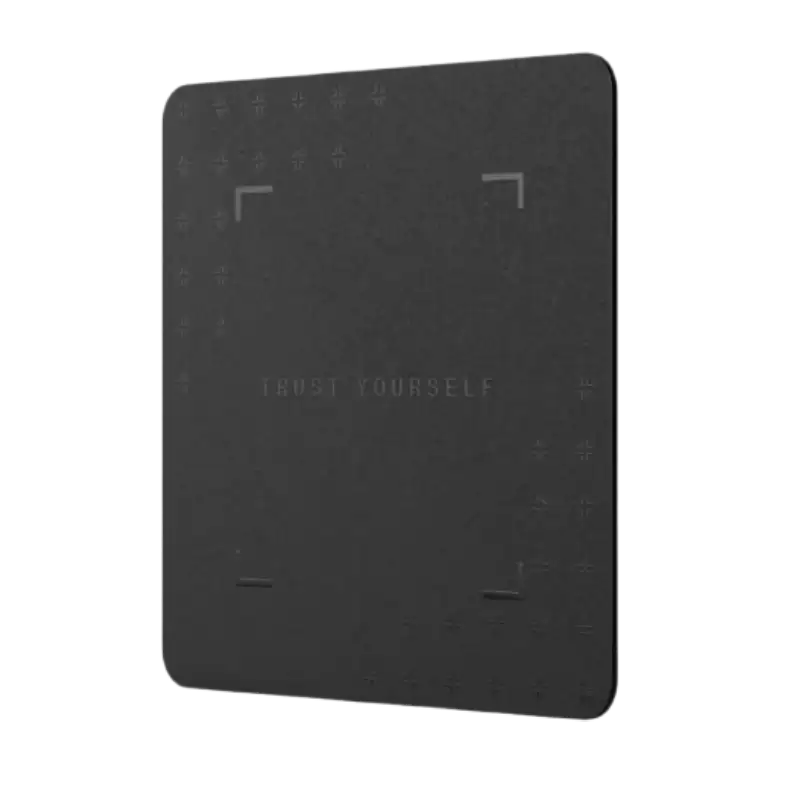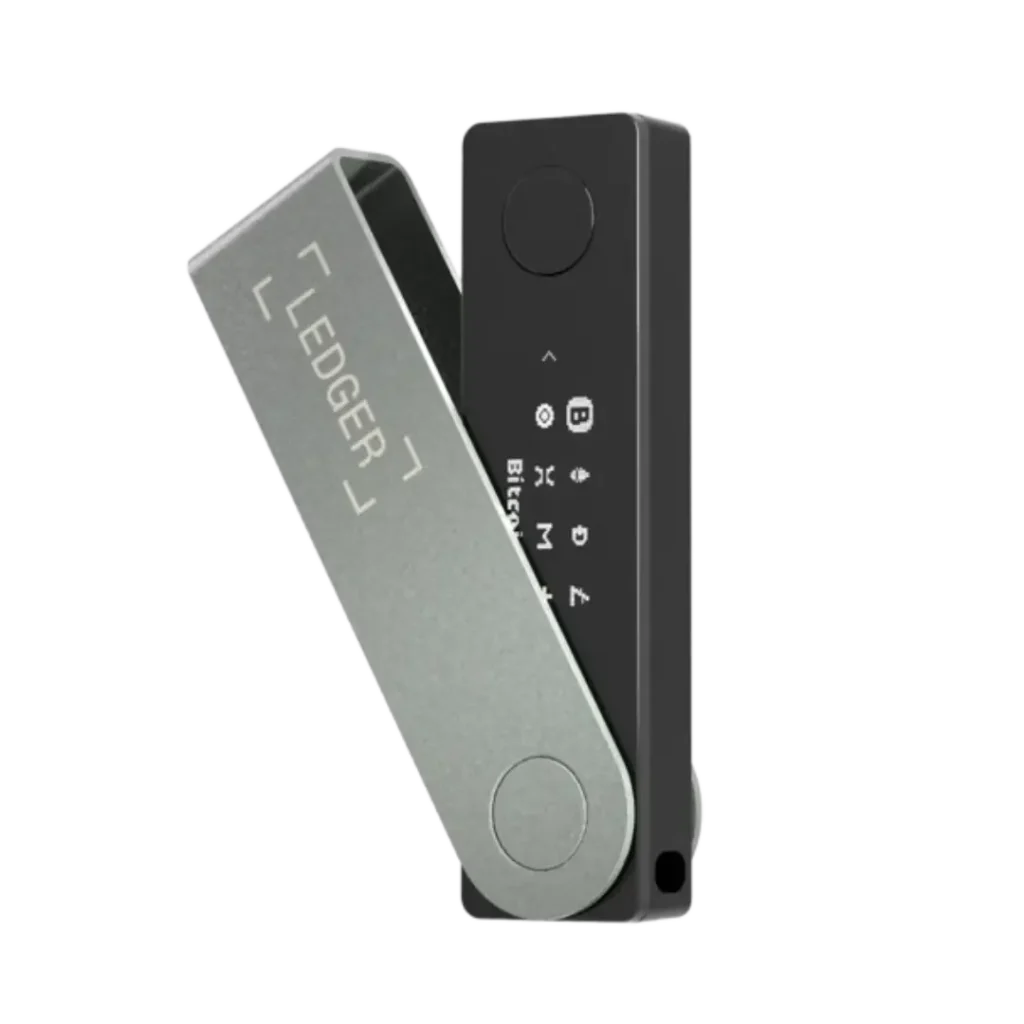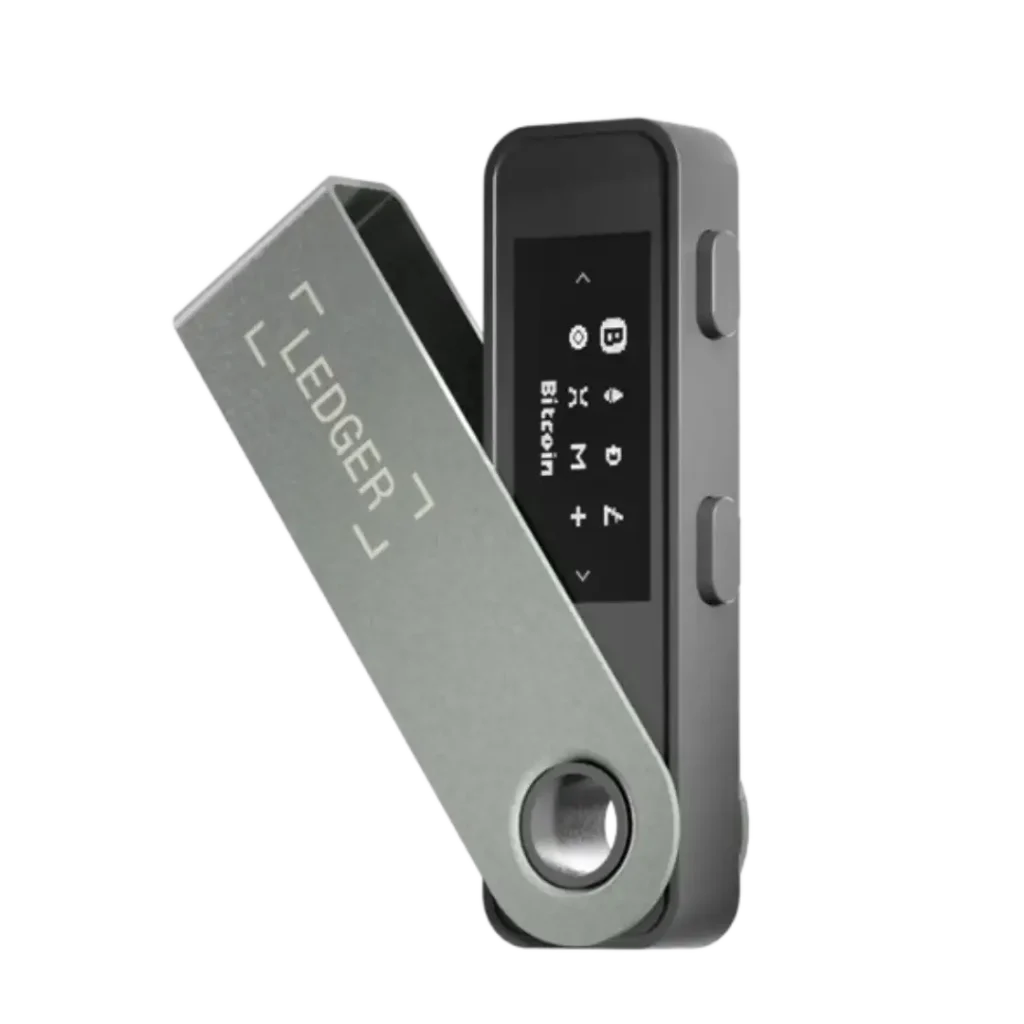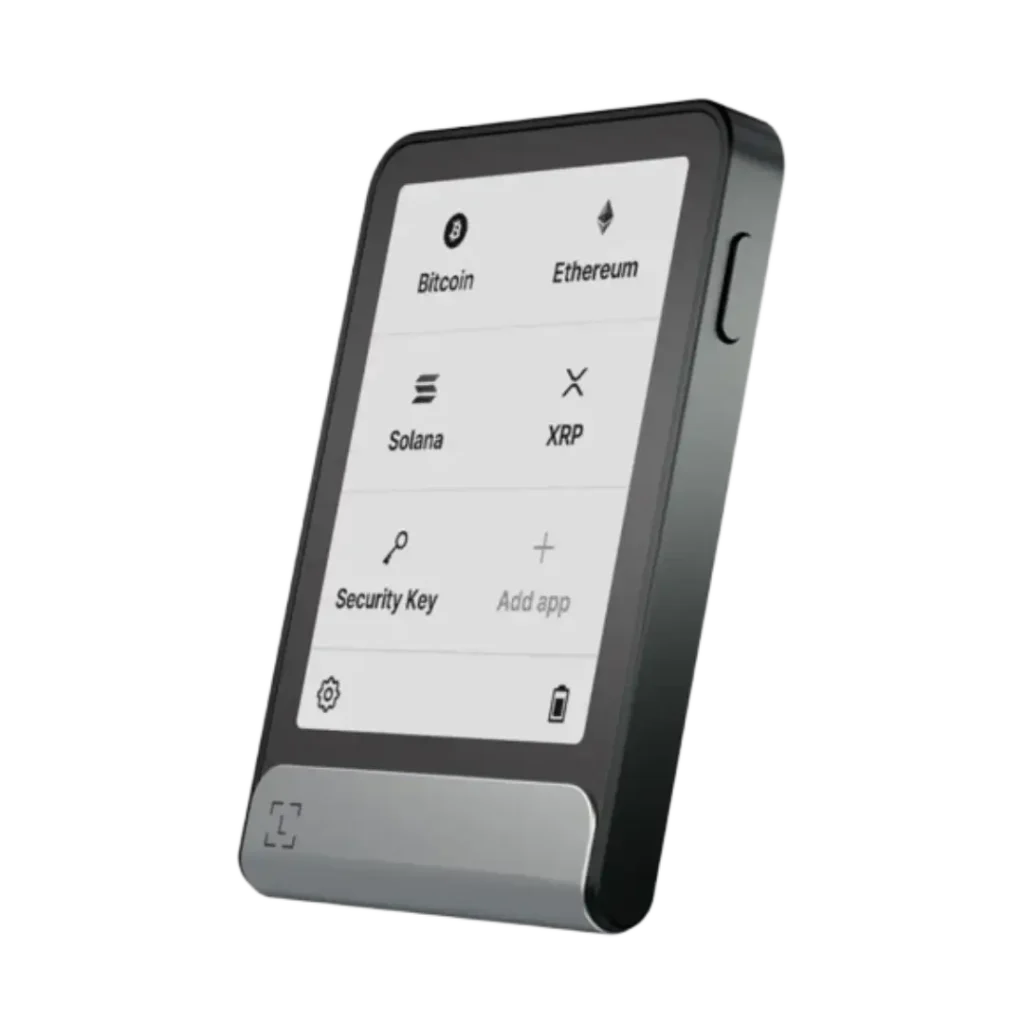In the world of cryptocurrency, your private keys are everything. Lose them, and you lose access to your assets. That simple rule has shaped how wallets are designed, how investors behave, and even how entire companies build their security models. For most people, the fear of misplacing a recovery phrase or damaging a hardware wallet is very real, and that’s where Ledger’s Recovery Key enters the conversation.
The Ledger Recovery Key is not just another accessory; it’s part of a layered safety net for users who want peace of mind without compromising on self-custody. Unlike a hardware wallet, which stores and manages your keys day-to-day, this product focuses on redundancy: a secure backup that protects you from accidents, hardware failures, or moments of human error. If your wallet or recovery phrase is ever lost, the Recovery Key acts as a safeguard, giving you another route to reclaim access.
This review takes a deep, user-centric look at the Ledger Recovery Key. We’ll explore how it works, how secure it truly is, whether it’s worth the cost, and who it’s really for. Our approach is to go beyond Ledger’s marketing claims and evaluate the product as an investor would, asking hard questions about risks, value, and real-world use cases. By the end, you’ll know if the Ledger Recovery Key is a smart addition to your crypto security strategy or if your existing setup already has you covered.
Quick Summary

The Ledger Recovery Key is designed as a secure, physical backup solution that complements your Ledger hardware wallet and the Ledger Recover subscription service. Its main purpose is to give you an additional safety layer if your recovery phrase is lost, stolen, or compromised. Instead of relying on a single point of failure, like a handwritten seed phrase on paper, the Recovery Key helps decentralize risk by adding redundancy in a controlled, encrypted manner.
| Aspect | Details |
|---|---|
| Product Type | Physical backup companion to Ledger hardware wallets |
| Primary Use | Acts as a recovery safeguard for lost or compromised seed phrases |
| Integration | Works alongside Ledger devices and Ledger Recover subscription |
| Security Layer | Encrypted and designed to protect against unauthorized access |
| Ease of Use | Simple integration for Ledger users; setup requires careful following steps |
| Target Audience | Long-term investors, security-conscious users, and businesses |
| Price Point | Additional purchase, priced above standard accessories |
The Good
The Bad
You’ll Need One of These Ledger Wallets,
Ledger Nano X

Ledger Stax

Ledger Nano S+

Ledger Flex

What is the Ledger Recovery Key?
The Ledger Recovery Key is a physical backup solution offered by Ledger as part of its broader approach to digital asset security. While most crypto investors are familiar with the 24-word seed phrase that comes with every hardware wallet, this method has one glaring weakness: it’s only as strong as your ability to protect that piece of paper. Fires, floods, theft, or even simple misplacement can permanently erase access to your crypto. The Ledger Recovery Key exists to minimize those risks by providing a controlled, encrypted backup that ties directly into the Ledger ecosystem.
Unlike the hardware wallet itself, which handles transactions and key storage day to day, the Recovery Key serves as a safety anchor. It’s meant to be used only in worst-case scenarios, when you’ve lost your recovery phrase or your wallet is inaccessible. Rather than forcing you to rely on a fragile handwritten copy, the Recovery Key allows you to maintain a tamper-resistant, Ledger-managed method of reclaiming your funds.
This product is also designed to work in tandem with Ledger Recover, the subscription-based service that fragments and encrypts your seed phrase before storing it with multiple custodians. The Recovery Key acts as an additional access path in that system. For users uncomfortable with outsourcing their entire recovery to paper or cloud-based solutions, it creates a balance: still highly secure, but far more practical to restore than trying to protect a single slip of paper for decades.
At its core, the Ledger Recovery Key is not a replacement for your hardware wallet or your seed phrase; it’s an insurance layer. It acknowledges the reality that human error and physical damage are inevitable, and gives you a tool that keeps long-term crypto ownership practical and resilient.
How It Works
The Ledger Recovery Key functions as part of a layered backup system, designed to reduce the risks tied to a single point of failure. To understand its mechanics, it helps to break the process down into stages: setup, storage, and recovery.
1. Setup Process
When you activate the Ledger Recovery Key, it integrates with your existing Ledger hardware wallet and, if you choose, with the Ledger Recover subscription. Instead of leaving you to manually duplicate your 24-word seed phrase, Ledger’s system encrypts the recovery information and links it to your Recovery Key. This ensures that the sensitive data is never exposed in plain text during setup.
2. Storage Logic
Once set up, the Recovery Key becomes a physical fallback. You don’t use it daily; it sits securely stored until it’s needed. Its core purpose is to stand ready in case your hardware wallet is destroyed, lost, or your written seed phrase goes missing. Because it is encrypted, even if the Recovery Key is stolen, it cannot be exploited without the proper Ledger authentication process.
3. Recovery Scenario
If you ever lose access to your wallet or your seed phrase, the Recovery Key can be used to initiate a secure restoration process. This involves verifying your identity through Ledger’s system, ensuring the device isn’t simply usable by whoever possesses it. It essentially bridges the gap between absolute self-custody and practical disaster recovery.
Here’s a simplified breakdown in table form:
| Stage | What Happens | User’s Role |
|---|---|---|
| Setup | Recovery Key pairs with your Ledger wallet; data is encrypted. | Follow Ledger’s guided setup process. |
| Storage | The Recovery Key is stored physically and safely, not used day-to-day. | Keep the key in a secure, protected location. |
| Recovery | In case of loss of wallet/seed phrase, the Recovery Key enables the restoration process. | Verify identity, follow Ledger’s restoration flow. |
This flow shows that the Ledger Recovery Key isn’t a replacement for security best practices; it’s a redundancy measure. It doesn’t eliminate the need for responsibility, but it reduces the stakes of a single mistake.
Security Features
The Ledger Recovery Key is built around one central promise: if your crypto wealth depends on it, the backup mechanism has to be nearly impossible to compromise. Security is therefore at the core of this product, both in how the data is encrypted and how access is controlled.
Encryption Standards
Ledger uses advanced encryption to ensure that no one, not even Ledger itself, can view or tamper with the recovery information stored on the Recovery Key. The key is essentially a hardware-secured vault, where the sensitive data is locked away in a format that requires multiple checks to access. This is a step up from paper backups, which are fully visible and vulnerable if discovered.
Tamper-Resistance
The Recovery Key is designed to withstand physical risks. Unlike a piece of paper, it won’t degrade easily, and unlike a cloud backup, it isn’t exposed to online hacking attempts. Even if the Recovery Key is stolen, it cannot be used directly to take control of your assets. Ledger’s ecosystem requires identity verification and device authentication, ensuring that possession alone does not equal access.
User Responsibility vs. Ledger’s Role
Security here is a shared model. Ledger provides the encrypted environment, hardware integration, and recovery protocols, but the user still has critical responsibilities: safe physical storage of the Recovery Key and maintaining access to Ledger’s ecosystem (such as a linked device and ID verification methods). In other words, Ledger closes many security gaps, but it doesn’t eliminate the human factor.
Defense Against Common Threats
- Theft: Encrypted and unusable without proper authentication.
- Accidental Loss: Functions as a fallback if your primary recovery phrase is gone.
- Hacking: As a hardware-based key, it isn’t exposed online, reducing attack surfaces.
- Physical Damage: More durable than paper or notebooks.
Overall, the Ledger Recovery Key offers a robust security model that blends encryption, hardware protection, and user accountability. It doesn’t hand over control to Ledger, but it does make the recovery process far safer and less dependent on fragile methods like paper backups.
Ease of Use
One of the biggest challenges with crypto security products is that they can feel intimidating, especially to people who aren’t highly technical. Ledger has tried to position the Recovery Key as a product that even cautious beginners can understand and use effectively, while still offering the depth and reliability advanced investors expect.
Setup Simplicity
The setup process is guided through Ledger’s own interface. Users follow clear, step-by-step instructions that ensure the Recovery Key is properly paired with their Ledger hardware wallet and (if opted in) with the Ledger Recover subscription. Unlike handling a raw seed phrase, where a mistake like jotting down the wrong word could ruin everything, the Recovery Key reduces the chance of user error during setup.
Daily Use (or Lack Thereof)
A defining feature of the Recovery Key is that you don’t actually use it in daily operations. Unlike your wallet, which is plugged in for transactions, this key is a silent backup. You configure it once and then store it away securely. This “set it and forget it” model reduces complexity for non-technical users while giving peace of mind to long-term holders.
Integration with Ledger Devices
Because it’s built to work within the Ledger ecosystem, the Recovery Key integrates smoothly with existing hardware wallets like the Ledger Nano series. It doesn’t require juggling third-party tools or unfamiliar interfaces. For users who already trust Ledger for their day-to-day custody, this continuity makes the experience seamless.
Accessibility vs. Responsibility
Ease of use here doesn’t mean users can get careless. The Recovery Key must still be stored safely, ideally in a place that protects it from theft, fire, or water damage. For less experienced users, this requires some planning, but Ledger’s documentation provides practical guidance.
In short, the Ledger Recovery Key balances simplicity with accountability: it’s designed to be easy to set up, invisible in daily life, and there when you need it most. Beginners won’t feel overwhelmed, and advanced users won’t feel limited.
Pricing and Value for Money
Here’s a thorough breakdown of the Ledger Recovery Key’s cost and how it stacks up in terms of value:
| Purchase Option | Price (USD) | Notes |
|---|---|---|
| Standalone card | $39 | Available on Ledger.com for individual backup purchase |
| 3-pack bundle | $99 | Ideal for multiple backups or managing different wallets |
| Included with new devices | $0 (free) | Shipped at no extra cost with new Ledger Stax or Flex hardware |
| Free for existing users | $0 (but shipping applies) | Complimentary for existing Stax/Flex owners until August 30, 2025 |
What You Get for $39 (or $99 for 3-pack):
- A durable, NFC-enabled, PIN-protected card that stores your recovery phrase securely using a Secure Element chip.
- Hardware-level robustness is far superior to paper backups.
- Simple, tap-and-go backup and restoration process, much easier than paper-based methods.
- Eliminates the need to write down all 24 recovery words manually every time you need to safeguard or restore your wallet.
- Seamless ecosystem integration for users already using Ledger.
Cost Comparison Insight:
- One-off cost: Unlike Ledger Recover, there’s no recurring subscription. Once purchased, the Recovery Key remains active indefinitely.
- Better longevity & durability: Compared to paper or metal backup solutions, it’s engineered to withstand everyday mishaps.
- Bulk savings: The 3-pack saves about $18 versus buying three single units, valuable if you’re securing assets across multiple locations or wallets.
Free Inclusion & Offers:
- Included in new device shipments: If you’re purchasing a Ledger Stax or Flex starting now, the Recovery Key comes bundled, making it a no-brainer upgrade.
- Limited-time offer for existing users: If you already own a Stax or Flex, you can claim one free until August 30, 2025 (just pay shipping).
Risks and Limitations
While the Ledger Recovery Key offers impressive security and redundancy, it isn’t a flawless solution. Like every crypto backup method, it comes with its own risks and trade-offs that users should evaluate carefully before buying.
1. Dependence on Ledger’s Ecosystem
The Recovery Key is designed to work tightly within Ledger’s infrastructure. This is convenient if you already own Ledger hardware, but it also creates a degree of dependence. If Ledger were ever to shut down the service or drastically change its terms, the utility of the Recovery Key could be limited. Unlike paper or metal backups, which are entirely independent, this product requires Ledger’s ecosystem to function.
2. Custodial Trust Factor
Even though Ledger emphasizes encryption and non-custodial design, some users remain skeptical. The Recovery Key represents a partial reliance on Ledger’s processes and technology. For purists who prefer complete independence from third parties, this could feel like a compromise.
3. Physical Storage Risk
Just like any backup, the Recovery Key itself must be stored carefully. If it’s misplaced, damaged beyond recognition, or stolen and paired with compromised user data, it may no longer serve as a safeguard. It solves the fragility of paper but does not eliminate the responsibility of safe storage.
4. Cost for Casual Users
At $39 for a single unit, the price is relatively low for serious investors but might feel unnecessary for someone holding a small crypto portfolio. In such cases, free alternatives like multiple paper backups or metal seed plates may offer sufficient protection without added expense.
5. Recovery Complexity in Extreme Scenarios
While marketed as simple, recovery still requires access to Ledger’s verification flow. If circumstances prevent identity verification, such as outdated ID documents or a lack of Ledger support access, restoration could be delayed or even impossible in extreme cases.
Bottom Line: The Ledger Recovery Key reduces many risks associated with seed phrase management but introduces new ones tied to ecosystem reliance and physical storage responsibility. It’s a strong tool for many investors, but not a magic bullet.
Who Should Buy the Ledger Recovery Key?
The Ledger Recovery Key is not a universal must-have, but rather a tailored tool that solves specific problems. To understand if it’s right for you, it helps to look at the types of users who stand to benefit most, and those who may not need the extra investment.
Ideal Buyers
- Long-Term Investors: If you’re holding crypto with the intention of keeping it untouched for years, the Recovery Key offers an additional insurance layer. It helps ensure your portfolio can survive accidents, natural disasters, or human mistakes.
- High Net-Worth Holders: Anyone with substantial assets in crypto will find the $39–$99 cost trivial compared to the security it provides. The redundancy significantly reduces the risk of catastrophic loss.
- Businesses or Institutions: Companies using Ledger wallets for treasury management can benefit from a physical, hardware-level backup. It supports compliance, redundancy, and disaster recovery planning.
- Security-Conscious Individuals: Users who already understand the importance of multi-layer backups, metal seed plates, safes, or distributed copies will appreciate the Recovery Key as a modern, encrypted alternative.
Who Might Not Need It
- Casual Users with Small Portfolios: If your crypto holdings are minor and not critical to your financial life, simpler and cheaper methods like multiple paper backups may be more than enough.
- Users Outside the Ledger Ecosystem: The Recovery Key only makes sense if you’re already committed to Ledger hardware. If you use other wallets or platforms exclusively, this product adds no value.
- Crypto Purists: Those who prioritize complete independence from third parties may view this solution as unnecessary reliance on Ledger’s verification and technology.
Alternatives to Ledger Recovery Key
When evaluating the Ledger Recovery Key, it’s important to also look at alternative backup solutions. Crypto security has no one-size-fits-all answer, and depending on your comfort level, budget, and long-term goals, you may find another method that works better for you.
1. Metal Seed Backups
One of the most popular alternatives is using stainless steel or titanium seed phrase backup plates. Brands like Cryptosteel and Billfodl allow you to engrave or slot your 24 recovery words into a fireproof, waterproof, and tamper-resistant plate. The advantage here is durability: your seed phrase can survive fires, floods, or physical decay far better than paper. However, these solutions do not encrypt your phrase; if someone gains physical access, they can read and use it instantly.
2. Shamir Backup Schemes
Some wallets, like Trezor with its Shamir Secret Sharing (SSS) method, allow you to split your recovery phrase into multiple parts. Each piece alone is useless, but combining a set number of them allows recovery. This reduces the risk of one single backup compromising your funds, but it also increases complexity. For casual users, managing multiple shares across locations can become cumbersome.
3. Ledger Recover Subscription
Ledger’s own subscription-based service is another direct alternative. Instead of a physical card, your recovery phrase is fragmented, encrypted, and stored with three different custodians. Restoration requires identity verification and multi-party reconstruction. While it removes the burden of physical backup, it comes with ongoing subscription costs and requires trust in third-party custodians.
4. DIY Multi-Location Backups
A low-cost but effective alternative is to manually store multiple copies of your seed phrase in different secure locations (e.g., a safe at home, a safe deposit box at a bank). This spreads risk without introducing new hardware. The drawback is that each copy remains a direct vulnerability if discovered.
Comparison in Context
- The Ledger Recovery Key strikes a balance between durability (like metal backups) and convenience (like cloud-based services).
- It avoids recurring costs tied to subscription services, but it still requires trust in Ledger’s ecosystem.
- For high-value investors, combining solutions (e.g., a Recovery Key plus a metal backup) often provides the strongest safety net.
Bottom Line: Alternatives vary in cost, complexity, and independence. If you want the simplest, most durable option, metal backups may be enough. If you value ecosystem-driven recovery with strong encryption, the Ledger Recovery Key holds its ground as a modern, accessible solution.
Final Verdict: Should You Get the Ledger Recovery Key?
The Ledger Recovery Key is a thoughtful step forward in crypto security, designed for investors who want redundancy without drowning in complexity. It doesn’t try to replace your hardware wallet or eliminate the need for secure practices; it simply acknowledges that human error, theft, and disasters happen and gives you a reliable second chance if they do.
For long-term investors and high-value holders, this product is a no-brainer. At $39, or $99 for a 3-pack, the cost is minimal compared to the potential loss it protects against. It adds durability and encryption far beyond a paper backup, while avoiding the hassle of ongoing subscription fees. It also integrates seamlessly into the Ledger ecosystem, which many users already trust for their day-to-day transactions.
That said, the Recovery Key isn’t perfect. It still ties you into Ledger’s infrastructure, meaning complete independence is off the table. For casual users with small portfolios, the cost and added layer may feel unnecessary. And for purists who reject any third-party reliance, metal seed plates or Shamir-based backups remain more appealing.
Overall, the Ledger Recovery Key delivers real-world value to serious investors, bridging the gap between fragile traditional backups and costly subscription models. If your crypto represents a meaningful part of your wealth, or even your future, it’s a smart addition to your security toolkit. If not, you may already be adequately covered with simpler, cheaper alternatives.
File Your Crypto Taxes in Less Than 20 Minutes,
Coinpanda

Coin Ledger

Koinly

Frequently Asked Questions [FAQs]
Not necessarily. The Recovery Key is an added layer of protection, especially if you worry about losing or damaging your written copy.
No. It’s a backup tool, not a wallet. You still need your Ledger device for transactions.
You’d still have your hardware wallet and seed phrase. The Recovery Key is extra redundancy, not your only line of defense.
Yes, it uses Ledger’s secure element technology to ensure it’s useless without proper authentication.
No. It complements the subscription but can function as a standalone backup option.
$39 for one, or $99 for a three-pack. Some new Ledger devices include it for free.
Long-term investors, businesses, and anyone with significant crypto holdings.
No. Ledger never sees your seed phrase; it remains encrypted and under your control.
Did we help you out? Show us some support:
Ethereum Address

0xE7D047f1FA287f4ad298864535a62E45E789b445
Bitcoin Address

bc1q84w4qvaz5a2wne9xlf799s8we4q64a2yrttet8
Solana Address

52wokPhAncfZwGtTCHMycXGKKKAPENBw5yFTMewmpHQz

